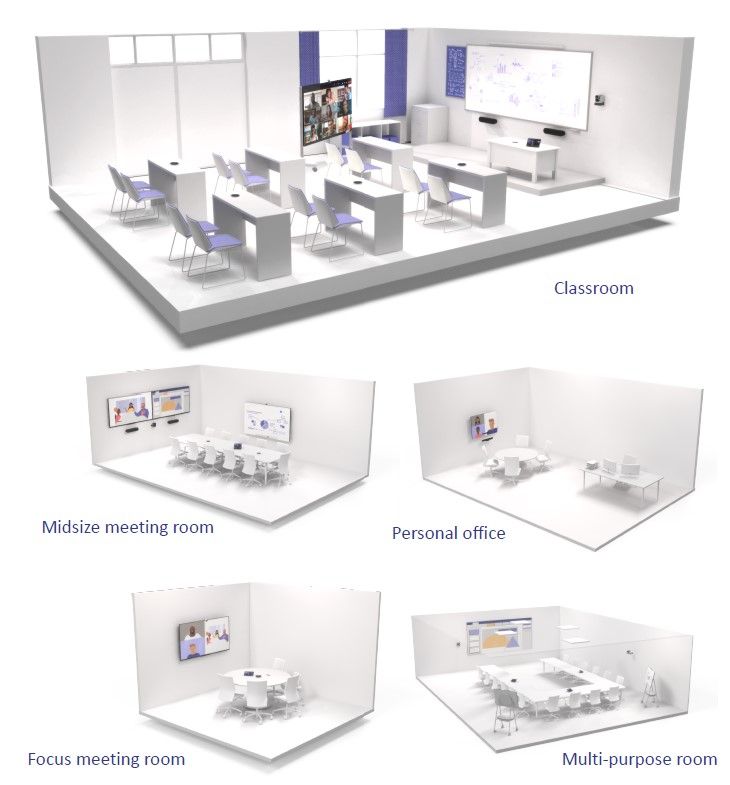How do we position the VC camera in Teams Rooms and all hybrid spaces?
What’s the optimum camera position? Or should that be: what’s the least worst?

As part of a series of short articles, Visual Displays' Director Greg Jeffreys discusses all things AV…
Microsoft’s super-prediction piece about the future of hybrid meeting and teaching spaces (see https://lnkd.in/e6ebj8ar) shows the camera in various positions. What’s the optimum? Or should that be: what’s the least worst?
As observed in my post yesterday (https://lnkd.in/ecWf5uaz ) on image size, if there was one major error in 2021’s Teams Rooms goldrush it was that display sizes were underspecified, sometimes massively so. 2022 will see the adoption of the ‘digital canvas’ - a step change upwards in display sizes. Is this a problem for camera position?
The good news about adoption of the digital canvas is futureproofing: it gives us the chance to iterate various screen templates/layouts in Teams, Zoom etc. (When hybrid room users have had weeks and months of experience under their collective belt, we can iterate with them to create exceptional user experiences.)
The bad news about the digital canvas is that it positions the camera farther to the margins. Or does it?
Let’s park that for the moment, but also noting that the Holy Grail of VC positioning is eye-to-eye contact.
In simulation, we think in terms of ‘cues’. What are the sensory cues that allow us to suspend our disbelief, to fully engage? Human visual and sensory perception is powerful. What you are reading is actually upside down on the retina at the back of your eye. You’re processing it in real time, without latency, to see it the right way up.
I’m not going to lead you further down this rabbit trail other than to ask you this. If, as is often the case, remote participants’ eyes are borderline visible onscreen, how do you know if they’re looking at you anyway?
There are two threads here relating to camera positions. Simulating eye to eye contact and facilitating eye to eye contact. The former is simpler than you might think, if you think in terms of simulation ‘cues’ - so long as you break it down into the proper granular elements.
We are developing both eye to eye contact (no, not telepresence, Pepper’s Ghost/autocue etc!) and simulated approaches. It’s essential. Apart from being a fun intellectual puzzle, it’s a top-of-the-list essential when the display’s the proper size.

Posted: 21st January 2022